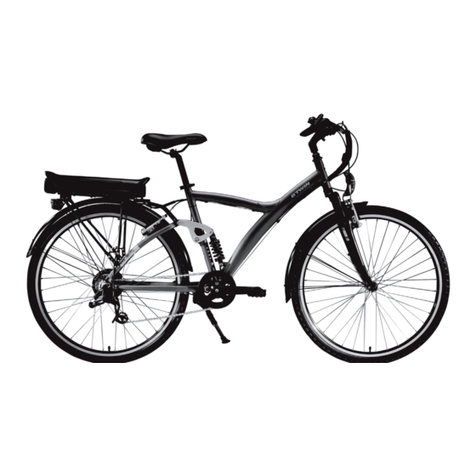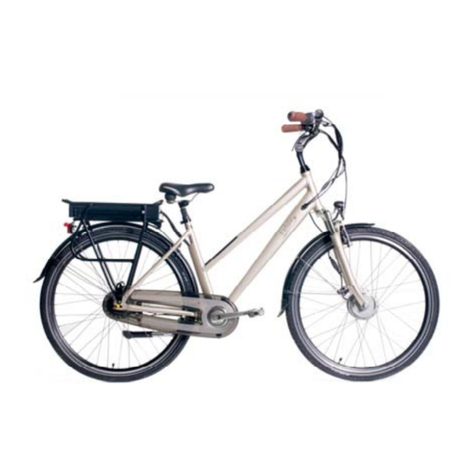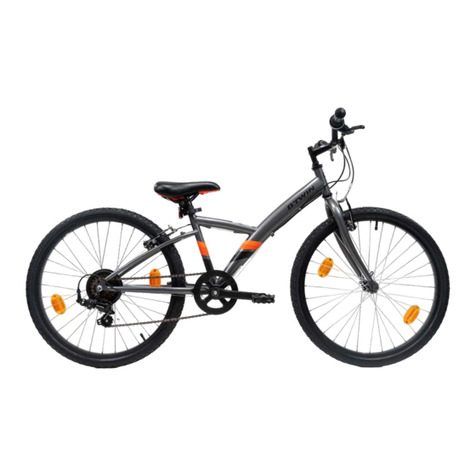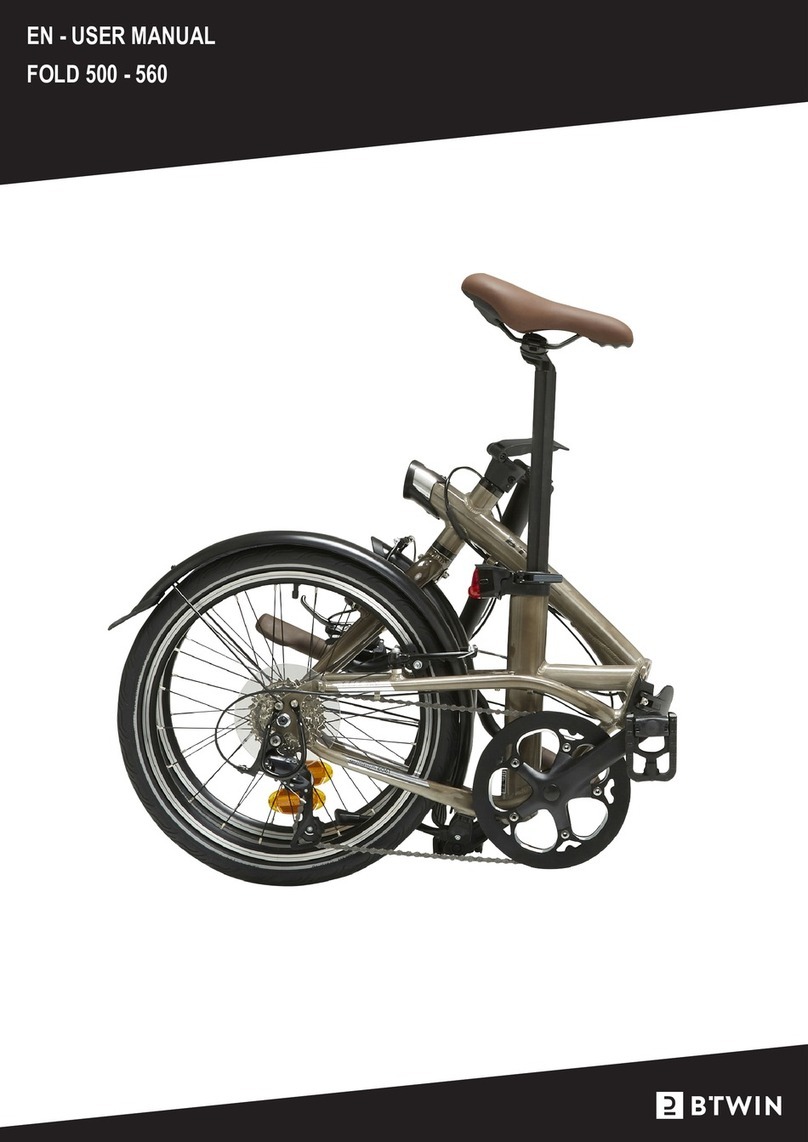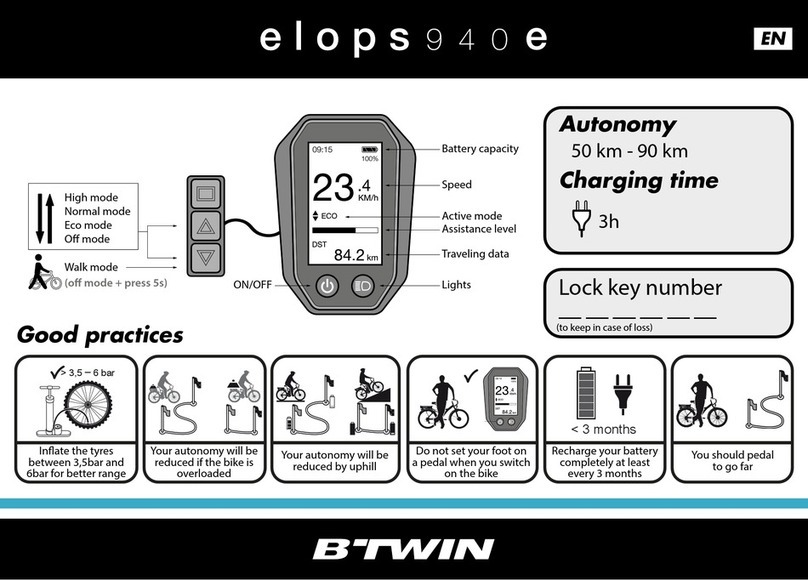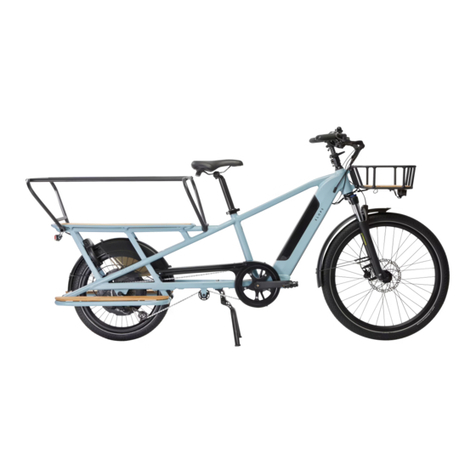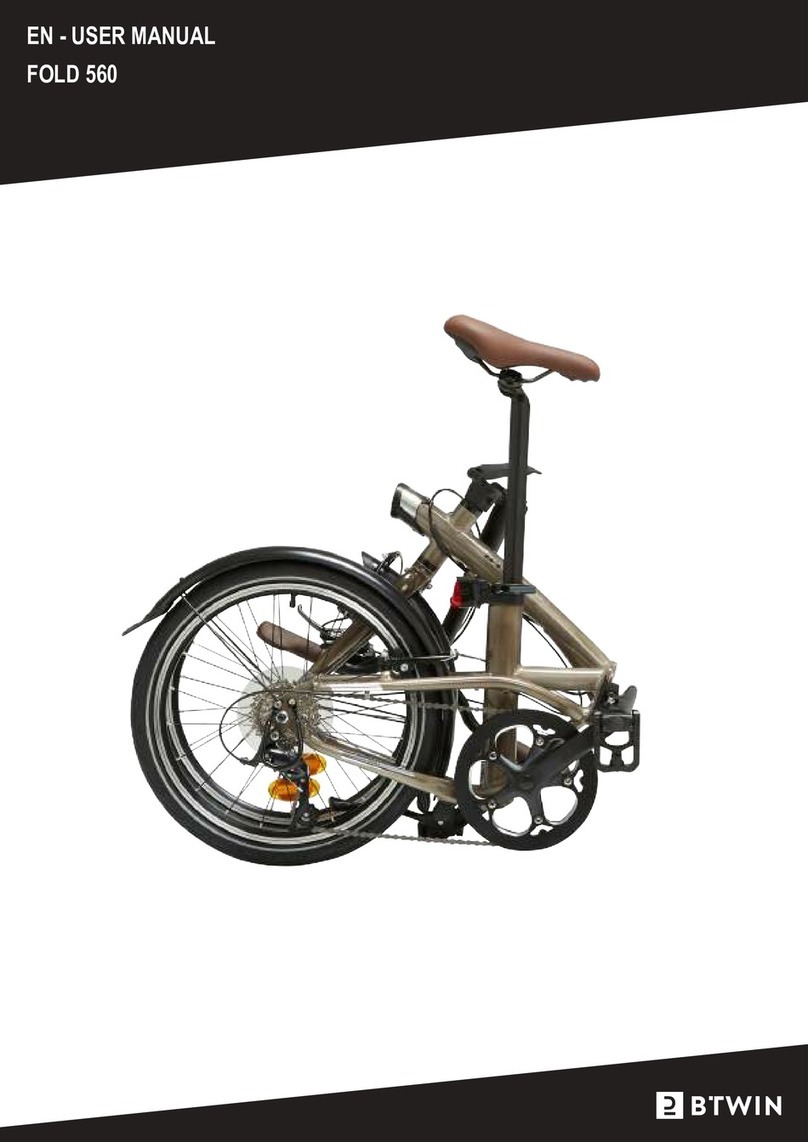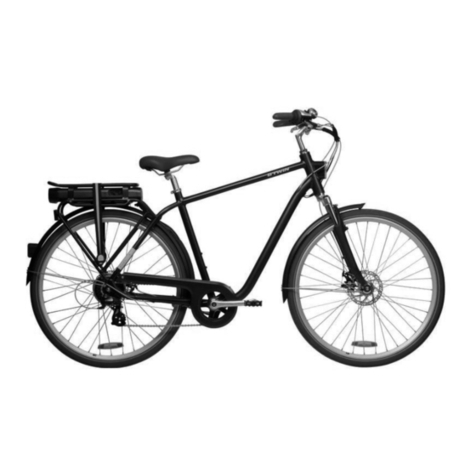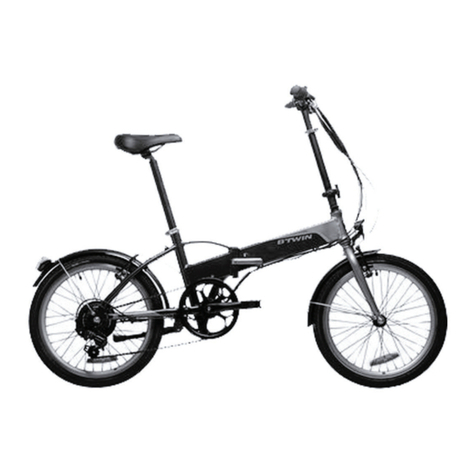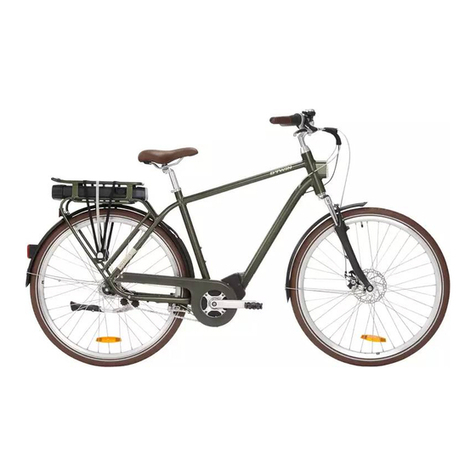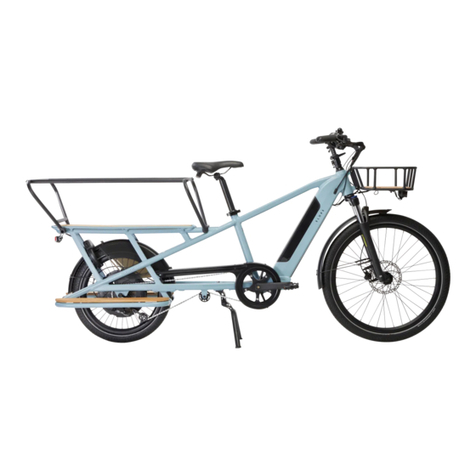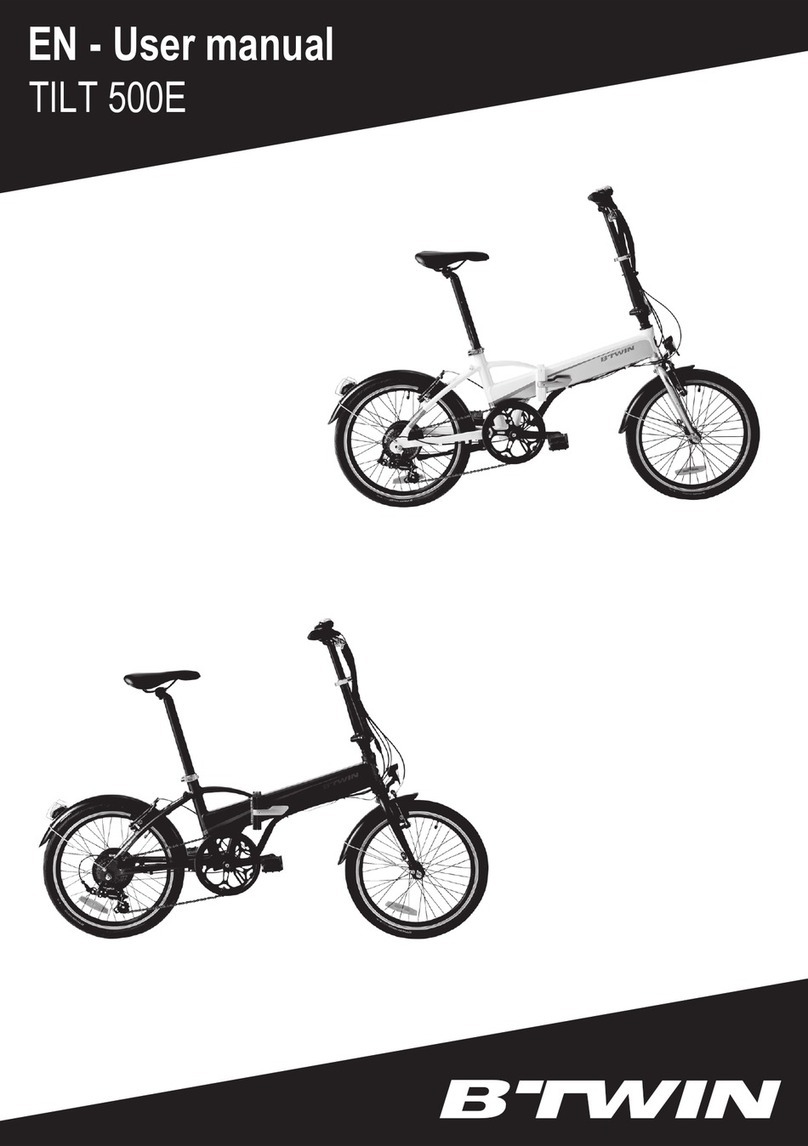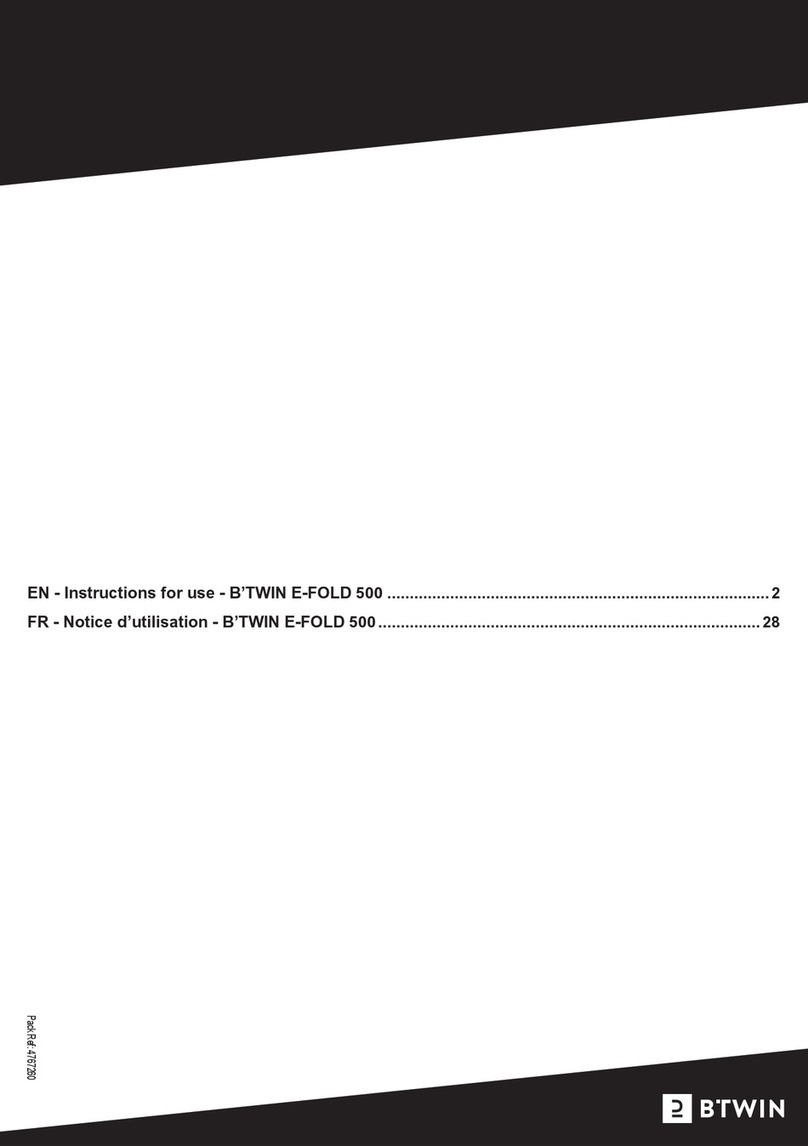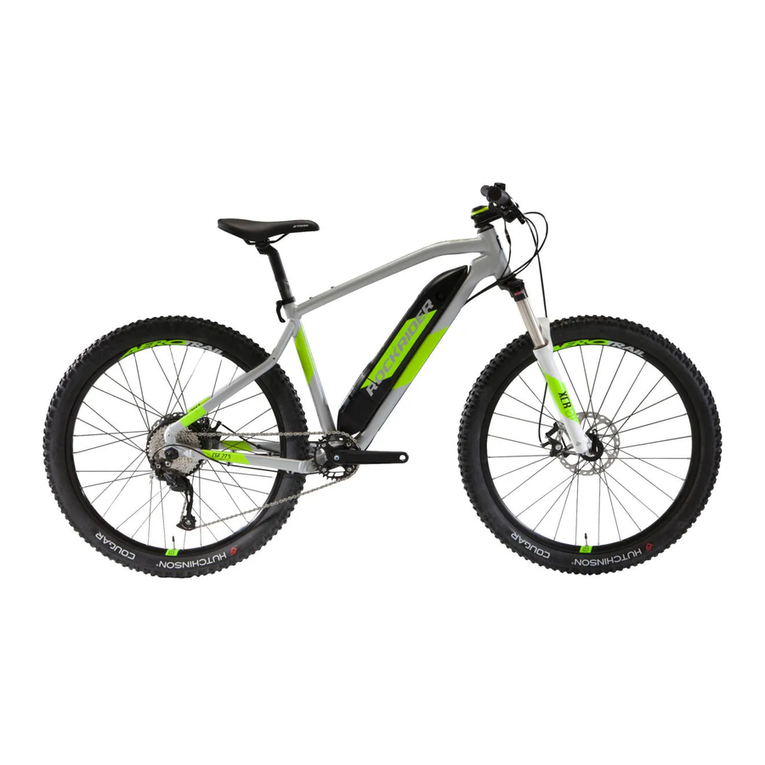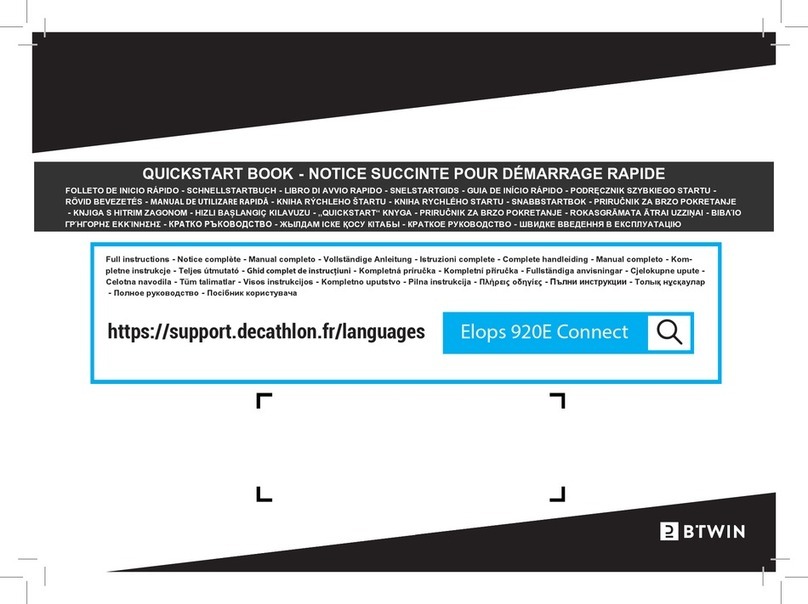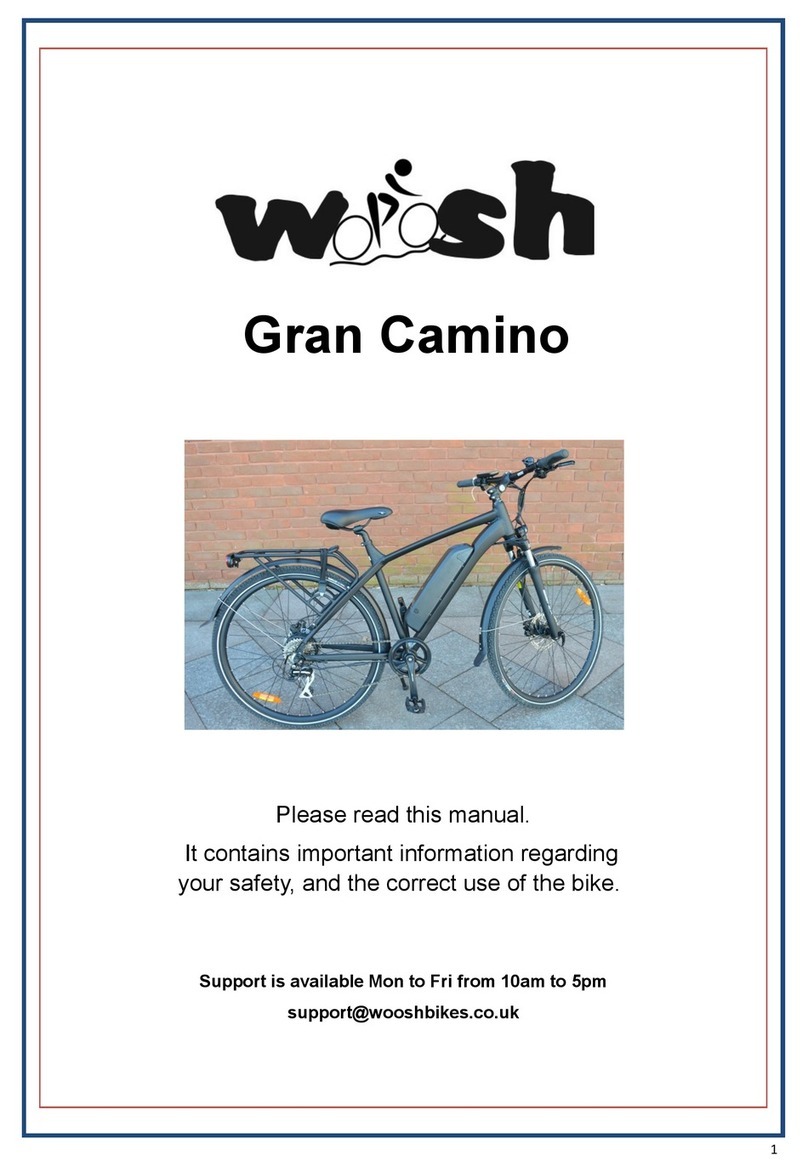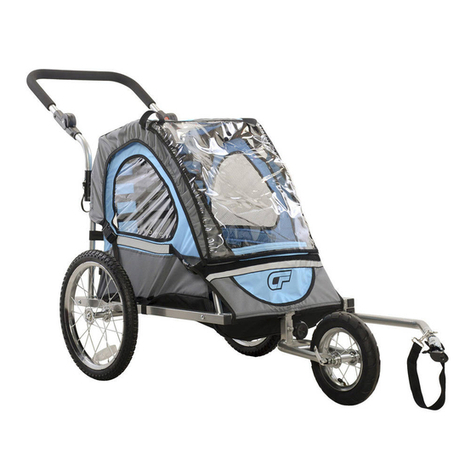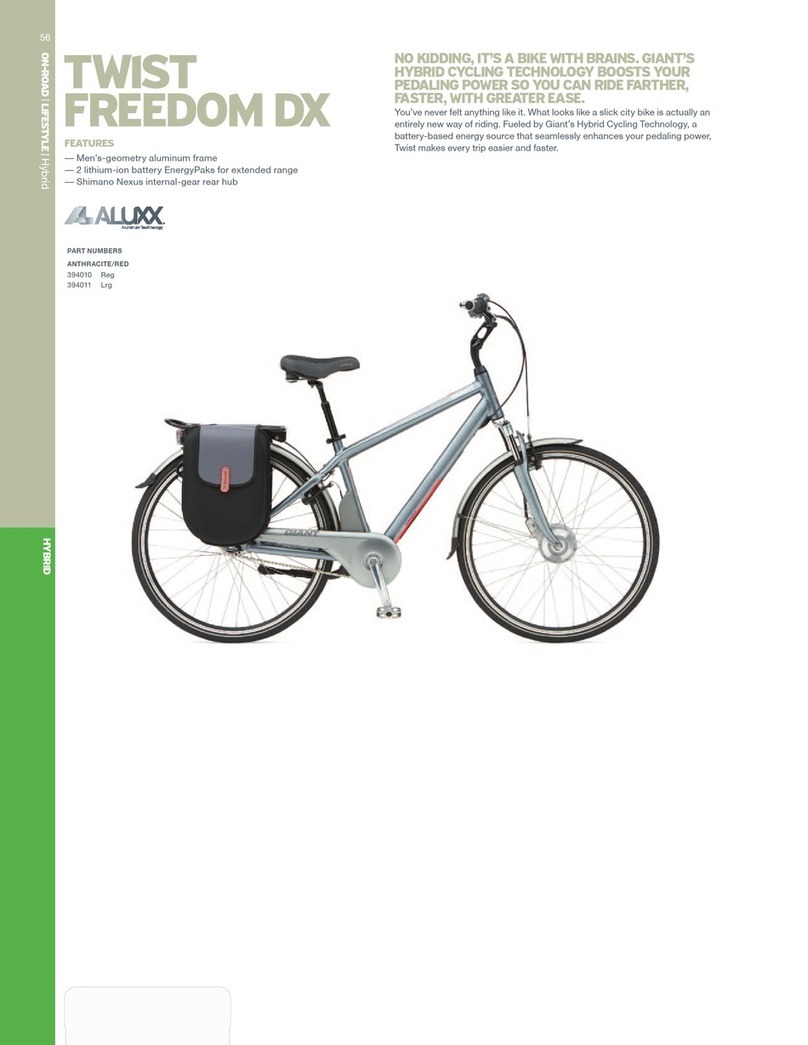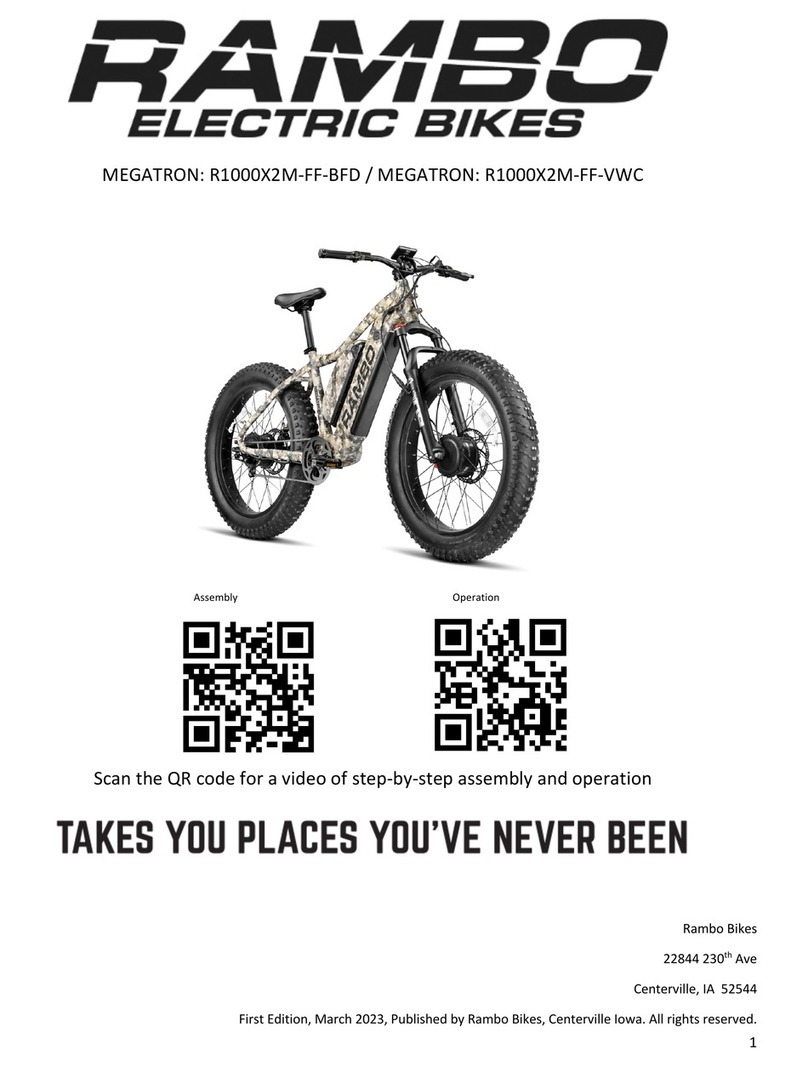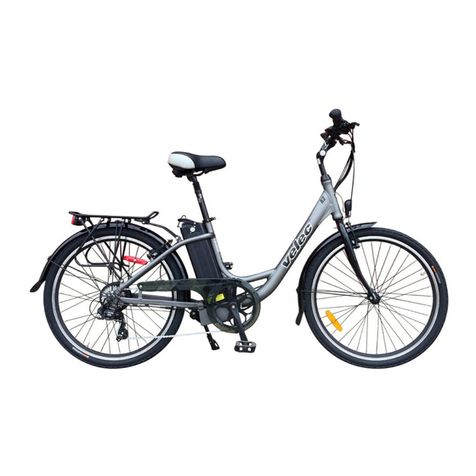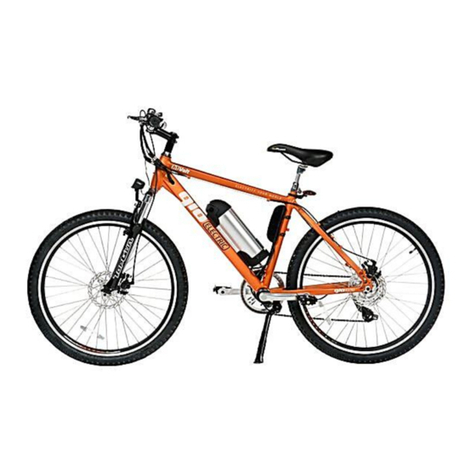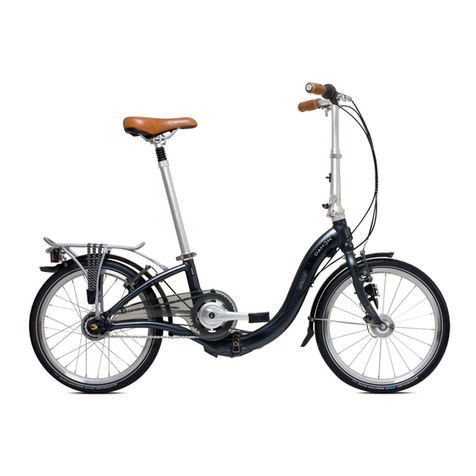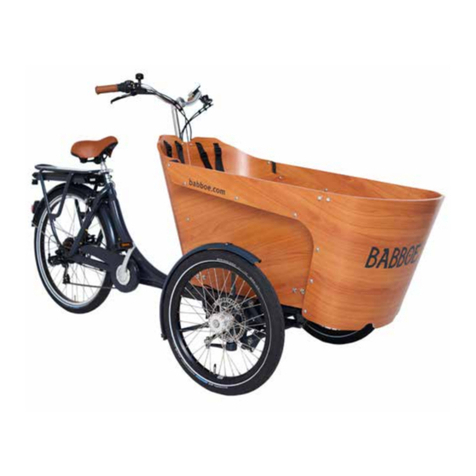3
6. "youdon'tget100%oftherangeattherstpushonthe
pedals"
The range is only at its maximum after 5 full battery charges. All the batteries used
on our electrically-assisted bikes are memory-free (an average of 300 cycles at
100% charge) and recyclable, but they only acquire their full range after several
full charges. The rst charge should give you approximately 70% of the range
indicated.
7. "thesteepertheslope,theshorterthedistanceyoucan
travel"
The battery range is linked to the gradient of the terrain. Electrically-assisted
bikes consume the most when going up-hill. This can even lead to breakdown
linked to motor overvoltage. If your trip includes a very steep gradient, choose a
bike with gears allowing you to go up it easily.
8. "youshallcheckthebatterychargeevenwhenyoudon't
use it"
The battery has a discharge limit threshold. If you leave your electrically-assisted
bike for more than three months without charging it (with an initial charge of
100%), the battery will be destroyed. If you have an electrically-assisted bike in
a holiday home, bring your battery home with you to check it and recharge it if
necessary.
9. "onthelastLED,youshallrideinecomode"
Electrically-assisted bikes have a battery gauge. The motor power on the last
LED will be weaker than on the rst LED's.
The electrical power remaining in the battery can only be checked with the vehicle
at a complete standstill, as while you are moving, the counter shows uctuating
LED's corresponding to the force the motor is drawing from the battery. When
you are on the last LED, the battery is down to its last dregs, the equivalent to
the reserve for a car. Switch to eco mode to avoid having to pedal home without
assistance.
10."ifanytechnicaloperationsarerequiredonthebicycle,
youshallswitchofftheignitionandyoushallremovethe
battery"
Repairs on electrically-assisted bikes are more technical and require a minimum
number of precautions to be taken.
All operations (cleaning, chain problems, punctures, etc.) MUST be carried out
with the motor switched off. Indeed, turning the pedal to put the chain back on if
it has come off will drive the motor if it is not switched off.
For the same reasons, your battery must never be opened. No operations must
be performed without the intervention of a specialist.
